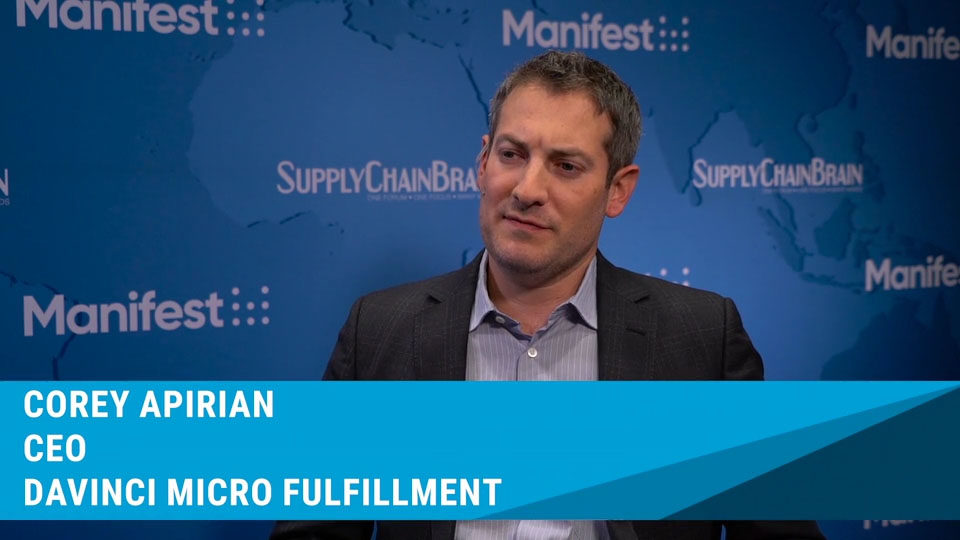
Watch: The Macro Benefits of Micro-Fulfillment
Getting inventory closer to the end user saves money on transportation and is much more eco-friendly, says Corey Apirian, chief executive officer of Davinci Micro Fulfillment.
Whether it’s located downtown or in suburbia, a micro-fulfillment center endeavors to position inventory closer to the consumer for speed and precision of delivery, Apirian says. That’s true whether the facility is 5,000 square feet in size in an urban setting, or a 150,000-square-foot building outside of town.
True micro-fulfillment centers, or MFCs, are hyper-local, meaning the radius that that facility can service is based on the category and the channel being catered to. “So if an end consumer orders groceries and they want that delivered in two hours, having a micro-fulfillment center hold that inventory and bring it to that customer, that's hyper-local,” Apirian says.
MFCs don’t have to be standalone facilities. They can be on the retail premises. Apirian says many big retailers and grocery stores can benefit from having such an operation placed within the store. “It makes a lot of sense for them to utilize a component of that store, and possibly have automation and robotics, which maximizes the throughput and capacity of those footprints,” he says. “It makes sense to have a differentiated SKU count from what's on the floor for that online versus inline shopper.”
The threshold question for many operators is whether a MFC is more cost-effective than a traditional hub-and-spoke center. Apirian believes it is. “It depends on the components of the supply chain you're looking at,” he says. “When you look at fulfillment, the highest cost is the last mile. So getting inventory closer to the customer is definitely a massive cost savings of efficiency, and an offset of capacity in your distribution and centralized fulfillment centers.” He believes in all types working together, but in the urban environment, last-mile costs argue in favor of MFCs.
